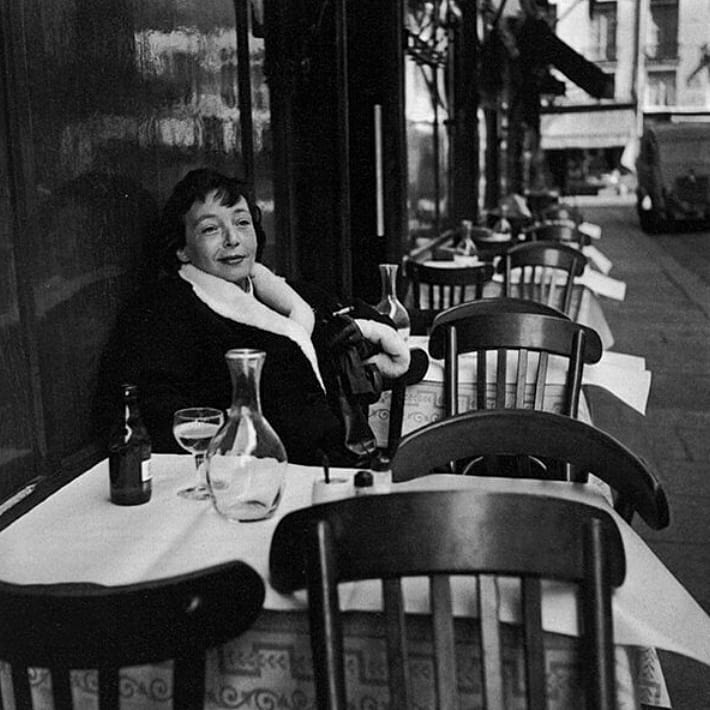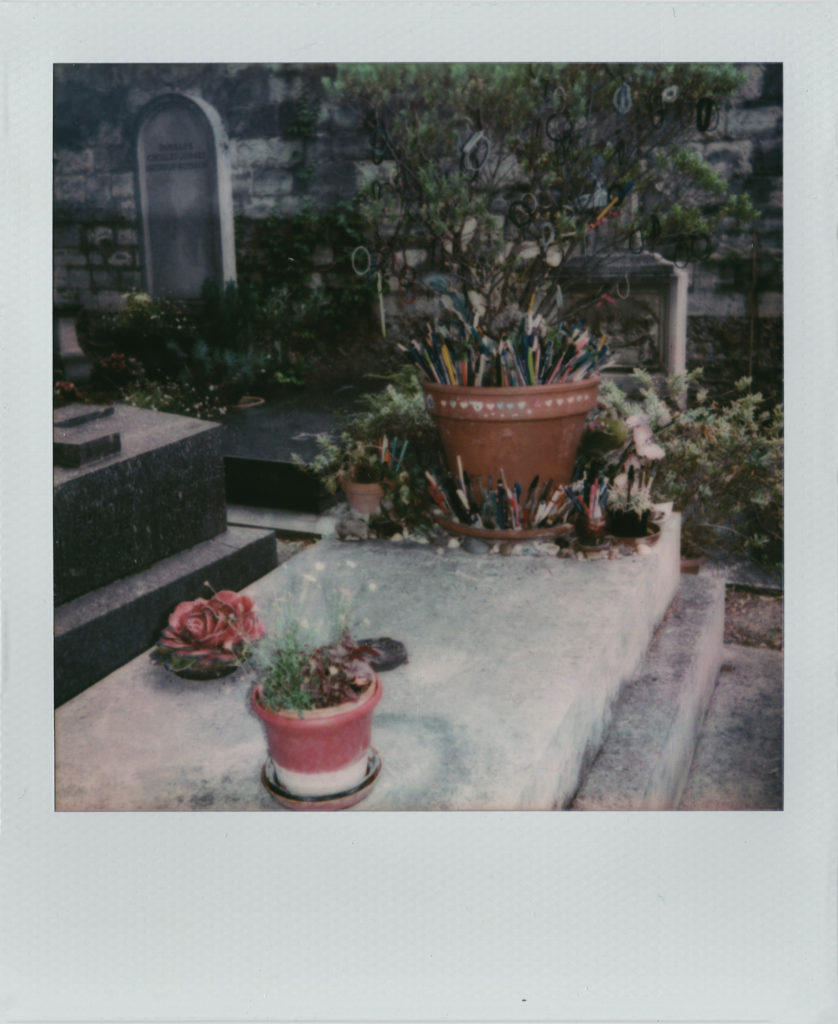Adam Scovell heads to Paris to pay a visit to the burial place of writer and experimental filmmaker Marguerite Duras.

Marguerite Duras explored places with as much vigour as she explored creative forms. Rather like her work, where novels, films, plays and more were all experimented upon, Duras flitted between places too, never quite settling. Yet her work has certainly been a fixture in French culture since the 1950s onward, whether through Alain Resnais’ famous adaptation of her screenplay Hiroshima, Mon Amour (1959) (which earned her an Oscar nomination), through her well awarded novels (which won an array of prizes including The Hemmingway Prize and the Prix Goncourt in 1984, both for The Lover) or through her own, rewarding experimental cinema.
Duras has been tied to a number of places through her work and life. She wrote extensively about her early experiences in French Indochina, writing some of her most provocative work about her time there as a young woman (especially in The Sea Wall (1950) and The Lover (1984)). Like Marcel Proust, she regularly decamped to the Normandy coast and arguably became just as synonymous with it as the celebrated writer of In Search Of Lost Time, not simply through writing there but also filming along its desolate beaches in winter. And yet, like so many French writers, she seemed connected to Paris as well, so much so that her wartime experiences were even recently turned into a film in May 2019, following in particular her attempts to help her husband, deported to Buchenwald by the occupying Nazis. Yet her presence then is more complicated than that, her collaboration with the Vichy government covering work for the resistance and eventually supporting the Communist Party.
It feels appropriate then to find Duras buried in Paris in spite of her living and owning houses in various places throughout her long life. A number of the properties she lived in, many of which were used for her film projects, have been within a safe distance from the capital rather than specifically at its heart. Whether it be the room at the Hôtel des Roches Noires in Trouville (or her house there), or the house at Neauphle-le-Château (where, among other things, she filmed Nathalie Granger (1972)), the space associated with her has been typically varied and certainly not strictly limited to the literary image of Parisian streets like so many others before and after her. Yet the writer kept her flat on Rue Saint-Benoît since first purchasing it in 1942. It was here on the Left Bank where she died, her funeral taking place in the church of Saint-Germain-des-Prés round the corner on the 7th of March 1996. Paris was the last place she saw.
Admittedly I had not only visited Duras’ grave before this trip but, on this particular meander, I wasn’t specifically there to see it either. Instead I was there for another maverick filmmaker: Agnès Varda. I had visited the grave of Jacques Demy, Varda’s filmmaker husband, a year or two before and felt, being in the area, that it was only right to pay my respects to the newly amended grave with the pair of filmmakers finally reunited, still not quite taking in fully the loss of a favourite filmmaker. Sat at La Rotonde, living briefly in the fantasy that a lifestyle in which sitting in La Rotonde regularly would be even remotely possible, the rain came down heavily on the endless Boulevard du Montparnasse. Rodin’s statue of Balzac, his cape wrapped around him like a vampire, glistened with the water, and a steady drip pattered onto the pavement from the bright red shelter above the café’s outdoor seating. I gambled that the grey shower was soon to pass, ditching my coffee and pocketing a cardboard coaster from the table as a memento.
Walking the few streets to the graveyard, which lies in the bizarre shadow of Montparnasse Tower, I walked to Duras’ grave from memory: I would go and see her first. The previous visit alone had been an unusual one. On a bench near to the grave, an old man had been sat, hunched over and sobbing loudly. I had asked him, after an hour spent trying to find the grave of Samuel Beckett and much in need of conversation, if he was alright, his reply simply being “Oui, oui merci, mais c’est très triste.” My French lacking only slightly less then than it does now, I had little I could say in response but had smiled and walked on, thinking that he had probably visited a relative rather than the writer in question.
This time round, the route was empty, it being a soaking weekday. Duras’ grave is easy to spot amongst the more lavish stones for there are few graves I have previously visited covered with so much ephemera. The grave itself is modest with very little detail on, the name carved on the stone and “M.D.” at its foot. But along with this is, what must be, a constant stream of flowers and mementos. Several little terracotta pots are placed alongside a main one decorated with hearts, the branches of its plant hung with wristbands, and all filled with a variety of pens; writers remembering the essentials.
Duras once wrote the following about writing:
“Finding yourself in a hole, at the bottom of a hole, in almost total solitude, and discovering that only writing can save you. To be without the slightest subject for a book, the slightest idea for a book, is to find yourself, once again, before a book. A vast emptiness. A possible book. Before nothing. Before something like living, naked writing, like something terrible, terrible to overcome.”
In spite of the frustration on show in this quote, it feels apt that, almost buried under a never ending stream of pens, her struggles with writing gave her immortality in the public eye. It was something that seemed inescapably yet indescribably poignant when wandering through Montparnasse Cemetery in search of dead artists on a rainy Monday afternoon.
